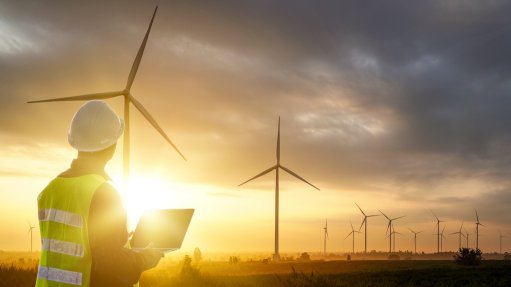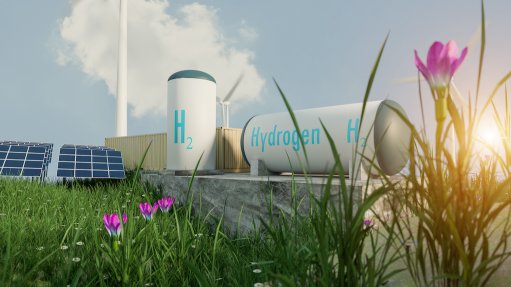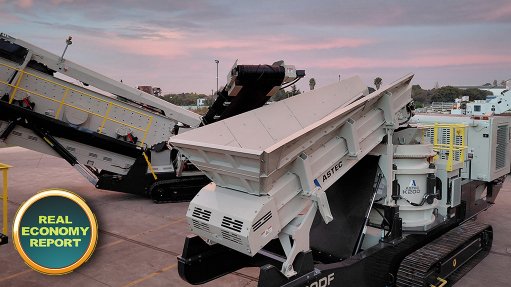West African exchange in charm offensive
It is refreshing to notice that the regional stock exchange in the French-speaking West African Economic and Monetary Union (WAEMU) is not keeping the eight-country bloc’s shining light under a bushel.
The WAEMU region – which comprises Côte d’Ivoire, Benin, Togo, Burkina Faso, Niger, Mali, Guinea Bissau and Senegal – has a combined population of 110-million people, shares a single currency, the CFA franc, which is linked to the value of the euro, and has a single central bank and a single capital markets regulator. It posted gross domestic product growth of more than 6% in 2017 – and this was for the sixth year on the trot – according to International Monetary Fund statistics. The Bretton Woods institution projects that this high level of growth will be maintained over the medium term, while growth in the whole of sub- Saharan Africa in 2018 is estimated at only about 3.4%. The only risks to the WAEMU’s favourable outlook are slippages in fiscal consolidation plans, delays in implementing structural reforms, security concerns, uncertainty about global growth and the vicissitudes of international financial markets.
Against the background of this rosy picture of the West African bloc, a team from the Côte d’Ivoire-headquartered regional stock exchange, the Bourse Regionale des Valeurs Mobilieres (BRVM), rolled into Johannesburg last month, its mission being to woo potential investors. South African entities hold a measly 3% to 4% of the equity of companies listed on the BRVM, which the bourse would like to increase. The South African holding, however, is the largest of any African country.
BRVM head Edoh Kossi Amenouvre averred at the Johannesburg road show, where his delegation met with fund managers and market experts, that South African investors – and those from elsewhere as well – were overlooking the attractive opportunities that his bourse presented. Partly to blame for this state of affairs, he charged, are the 45 companies whose shares are traded on the exchange, as they are not publicising their “very good results” and future projections enough.
Amenouvre, however, conceded that a lack of information on listed companies was not peculiar to the BRVM, but was a common complaint among frontier-market investors. The upshot was limited funds being allocated to exchanges in those markets.
At least three initial public listings are poised to take place on the BRVM, among them Mali’s Societe des Telecommunications, possibly before the end of the year. Mali’s government intends to offload just under half of its 39% shareholding in the telecommunications company and list the shares on the BRVM. The other two prospective listings are expected to be on its small and medium-sized companies board, which opened in 2017.
Had Amenouvre and his team not taken the initiative to visit Johannesburg – Africa’s financial capital – it can be assumed that many potential investors on these shores would be none the wiser about these opportunities.
The BRVM is the sixth-largest stock exchange in Africa, but its market capitalisation of about $17.7-billion as at the end of December is a small fraction of the JSE’s R15-trillion. However, the bourse has initiated discussions with its counterparts in countries like Nigeria and Ghana with a view to improving the ease with which brokers can trade across exchanges in West Africa.
This initiative’s goals are in line with those of the African Exchange Linkages Project (AELP), being implemented by the African Securities Exchanges Association (ASEA) and the African Development Bank. Eight benefits have been spelt out for the AELP, namely increased liquidity in Africa’s capital markets, enhanced market openness, greater foreign participation, increased domestic institutional participation across the continent, a bigger financial market, convergence towards international standards, and capacity building and information sharing.
The AELP will kick off with a pilot phase comprising the JSE, the BRVM and the stock exchanges of Kenya, Mauritius, Morocco and Nigeria before being rolled out to other ASEA member exchanges. ![]()
Comments
Press Office
Announcements
What's On
Subscribe to improve your user experience...
Option 1 (equivalent of R125 a month):
Receive a weekly copy of Creamer Media's Engineering News & Mining Weekly magazine
(print copy for those in South Africa and e-magazine for those outside of South Africa)
Receive daily email newsletters
Access to full search results
Access archive of magazine back copies
Access to Projects in Progress
Access to ONE Research Report of your choice in PDF format
Option 2 (equivalent of R375 a month):
All benefits from Option 1
PLUS
Access to Creamer Media's Research Channel Africa for ALL Research Reports, in PDF format, on various industrial and mining sectors
including Electricity; Water; Energy Transition; Hydrogen; Roads, Rail and Ports; Coal; Gold; Platinum; Battery Metals; etc.
Already a subscriber?
Forgotten your password?
Receive weekly copy of Creamer Media's Engineering News & Mining Weekly magazine (print copy for those in South Africa and e-magazine for those outside of South Africa)
➕
Recieve daily email newsletters
➕
Access to full search results
➕
Access archive of magazine back copies
➕
Access to Projects in Progress
➕
Access to ONE Research Report of your choice in PDF format
RESEARCH CHANNEL AFRICA
R4500 (equivalent of R375 a month)
SUBSCRIBEAll benefits from Option 1
➕
Access to Creamer Media's Research Channel Africa for ALL Research Reports on various industrial and mining sectors, in PDF format, including on:
Electricity
➕
Water
➕
Energy Transition
➕
Hydrogen
➕
Roads, Rail and Ports
➕
Coal
➕
Gold
➕
Platinum
➕
Battery Metals
➕
etc.
Receive all benefits from Option 1 or Option 2 delivered to numerous people at your company
➕
Multiple User names and Passwords for simultaneous log-ins
➕
Intranet integration access to all in your organisation


















